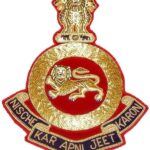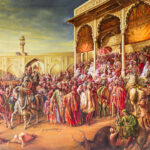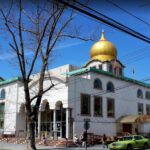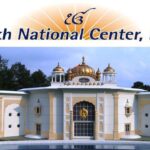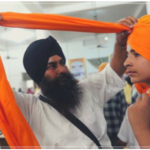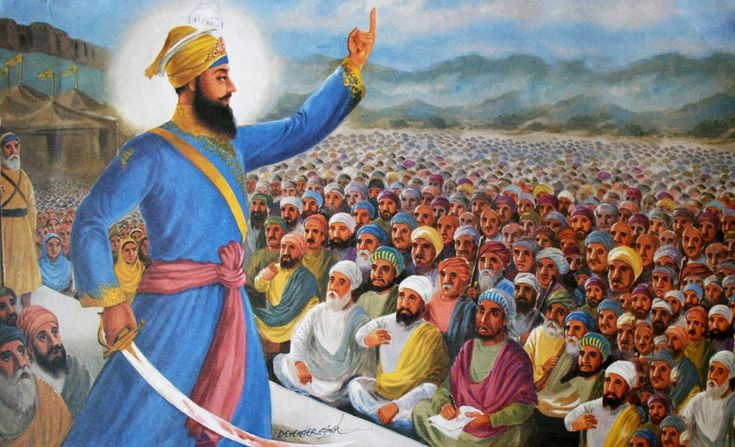How the Sikh Regiment tradition of greeting twice on Republic Day began
From Vijay Chowk to Red Fort, all parties have been present once – congratulations to the President of India. However, the Sikh Regiment greets twice. Second salutation to Gurdwara SisGanj. Sewage equipment like a returning shower woke up the leaves of brave Sikh soldiers.
From Vijay Chowk to Red Fort, all parties have been present once – congratulations to the President of India. However, the Sikh Regiment greets twice. Second salutation to Gurdwara SisGanj. Sewage equipment like a returning shower woke up the leaves of brave Sikh soldiers.
As per his account, he did it first during the full dress when Gurdwara was pleasantly surprised. When he repeated it at the actual show, the contingent was stunned by the blowing of rose petals by spectators from both sides – leaves provided by Gurdwara.
- It was the 24th of Jan 1979 for a full-length practice of the Republic Day Parade. After marching a large portion of the 14 Kilometers unfamiliar we were finally approaching the Red Fort, where we awaited refreshments and transportation. The march started from Vijay Chowk, past the base of Rajpath Saluting which maintains the Indian Gate on the right of Curzon road (KG Marg), to Connaught Place- Minto bridge-Ram Lila ground- Chawri Bazar- Kinari Bazar-Sis Ganj Gurdwara Sahib-Chandni Chowk ends at the front grass of the Red Tower. As we approached Chandni Chowk, Gurudwara SisGanj looked to our right. According to Sikh Regimental tradition as commander, I commanded the marching Sikh army “Dhainay Dekh” and lowered my sword to greet them. Gurdwara officials were shocked as well as swarms of spectators lined the street. When we arrived at Red Fort the Contingent rested, but the Gurdwara Savadars had held us to serve ‘Karah Prasad’, drinks, and a reward.
- Come on 26 Jan 1979, as we approach Sisganj Gurdwara Sahib and by order of “Dahinay Dekh”, Gurdwara officials are prepared at this time. Rose petals showered on us on both sides of the road between the noisy Jaikaras Sat Sri Akal!
The Sikh army is one of the most heavily armed soldiers in the Indian army. As India prepares to celebrate the 71st day of the Republic, here is one unique and fascinating military tradition. Although all Indian military units greet only once, the Sikh army does so twice.
The proverb began 42 years ago on January 24, 1979. During the practice of the Republic Day Parade, a new Sikh army marched from Vijay Chowk to Red Fort. The army, led by Brigadier Injo Gakhal, passed Rajpath, followed by KG Marg, Connaught Place, Minto bridge, Ram Lila ground, Chawri Bazar, Kinari Bazar, Sis Ganj Gurdwara Sahib, Chandni Chowk, and finally stopped at Red Fort.
When the army crossed over to Sis Ganj Gurdwara Sahib, Brigadier Injo Gakhal ordered his troops to turn right (Dhainay Dekh) and lowered his sword (a sign of greeting). This surprised the Gurdwara authorities, who followed the group to Red Fort. As a token of respect, they offered the soldiers a drink and ‘Karah prasad’.
Two days later at the Republican Day organized in 1979, Brigadier Injo Gakhal again ordered his troops to look to the right (Dhainay Dekh) while lowering his sword. In this case, however, the Gurdwara authorities were prepared in advance. Among the ‘Sat Sri Akal’ noisy songs, they were waved with flower petals by the army as they marched towards the Red Fortress. And thus began a tradition of double greetings, once with the President of India, and with Sis Ganj Gurdwara Sahib.
The importance of Sis Ganj Gurdwara Sahib
Guru Tegh Bahadur was the ninth of the ten Sikh Gurus of the Sikh religion. Not only did he prevent the powerful religious conversion of the Kashmiri Pandits to Islam but he was also beheaded before Mughal emperor Aurangzeb in Delhi for refusing to convert to Islam. He was convicted of ‘fighting in the war’ and was told that only Islam could save him. When he refused, he was beheaded. In Delhi, Gurudwara Sis Ganj Sahib was built on the site where Guru Tegh Bahadur was killed. His ‘sister’ (beheaded) was brought to Anandpur Sahib by his disciple Bhai Jaita and burned by the 10th Sikh Guru Gobind Rai.
The Indian army is the second-largest army in the world that appeared to be in its position under British colonial rule. Since then, we have grown to become one of the world’s leading warriors. Today the Indian army is on the rise in South Asia, seeking to protect its borders from all kinds of threats. In its long history of stairways, these are the 5 most decorated sections.
Sikh Regiment- The Sikh Regiment is a children’s army of the Indian Army. The Sikh army is the highest armed force of the Indian Army and in 1979, the first army was the highly armed Commonwealth Army with 245 pre-independence awards and 82 post-independence awards, when it was transformed into the 4th, Mechanized Infantry Regiment. In total, the group has 1652 awards and honors including, 2 Param Vir Chakras, 8 Maha Vir Chakras, 64 Vir Chakras, 4 Ashoka Chakra, 14 Victoria Cross, and 21 Indian Order of Merits. This makes the Sikh army the most decorated unit in India.
11th Gorkha Regiment- 11 Gorkha Rifles was officially revived on January 1, 1948, with program centers in Palampur and Santa Cruz, Mumbai. The regimental center was then transferred to Jalapahar in Darjeeling, then moved to Clement Town, Dehradun for a short time, and finally to Lucknow where we established ourselves. Honor war veterans Bogra, East Pakistan 1971, Shingo River Valley, Jammu and Kashmir 1971 and Batalik, Op Vijay J&K 1999. Honor theater by East Pakistan 1971 Jammu and Kashmir and Kargil of Operation Vijay 1999. This makes the Gorkha Rifles such a highly decorated and feared unit in India.
Kumaon Regiment- The Kumaon Regiment is the heavily decorated Indian Army. The army traces its origins to the 18th century and has fought in all major campaigns of the British Indian Army and the Indian Army, including two world wars. Kumaon Rajput Army is the highest decorated army in the Indian Army. The team won 2 Param Vir Chakras, 4 Ashoka Chakras, 15 Maha Vir Chakras, 6 Kirti Chakras, 2 Uttam Yudh Server medals, 78 Vir Chakras, 1 Vir Chakra & Bar, 23 Shaurya Chakras, 1 Medal of Yudh Seva, 127 Medal of Yudh Seva, 127, 2 Medals of Sena Nebha, 8 Medals of Param Vishisht Server, 24 Ati Vishisht Server Medals, 1 PV, 2 PB, 1 PS, 1 AW and 36 Vishisht Server Medals. This made the Kumaon one of the most feared forces of the Indian Armed Forces.
Rajputana Rifles- The Rajputana Rifles is the oldest army rifle and is one of the highest ranks in the Indian Army. It was first enlisted in 1921 as part of the British Indian Army, in which six pre-existing forces were assembled to form six of the 6th Rajputana Rifles. In 1945 the numbering was reduced and in 1947 the army was transferred to the newly formed Indian Army. Since independence, the force has been involved in many conflicts with Pakistan, including the Korean Army in Korea under the United Nations in 1953-54 and the UN Mission to Congo in 1962. As a rifle, it uses the bugle horn as its symbol, similar to the British Light Division, but unlike its British counterparts, the Rajputana Rifles march at the same speed used in the Indian Army as a whole. This army is heavily decorated with many Param Vir Chakra, Maha Vir chakras, Ashoka Chakras, and Military Crosses among its adorned soldiers.
Naga Regiment- The Naga Regiment is a children’s army of the Indian Army. It is among the junior officers of the Indian Army – the first army stationed in Ranikhet in 1970. The army recruits mainly from Nagaland, northeastern India. 2 Naga was assigned to the UN mission in Sudan and was awarded the UN Commander-in-Chief Award Card. The military then launched a special recruitment campaign at all levels to recruit 325 Naga youths across the province. GOC Nagaland, Major General R. N. Kapur, has stated that at least 3,000 Naga youths will be drafted into the Armed Forces, Assam Rifles, and the wars held in 2014 and he hopes the youth will have the opportunity to join the army. Among its honors, it has 1 Maha Vir Chakra, 8 Vir Chakras, Kirti Chakra (Major. David Manlun) Posthumous, 6 Shaurya Chakras, 1 Yudh Seva Medal, 1 Vishist Seva Medal, 48 Sena Medals

